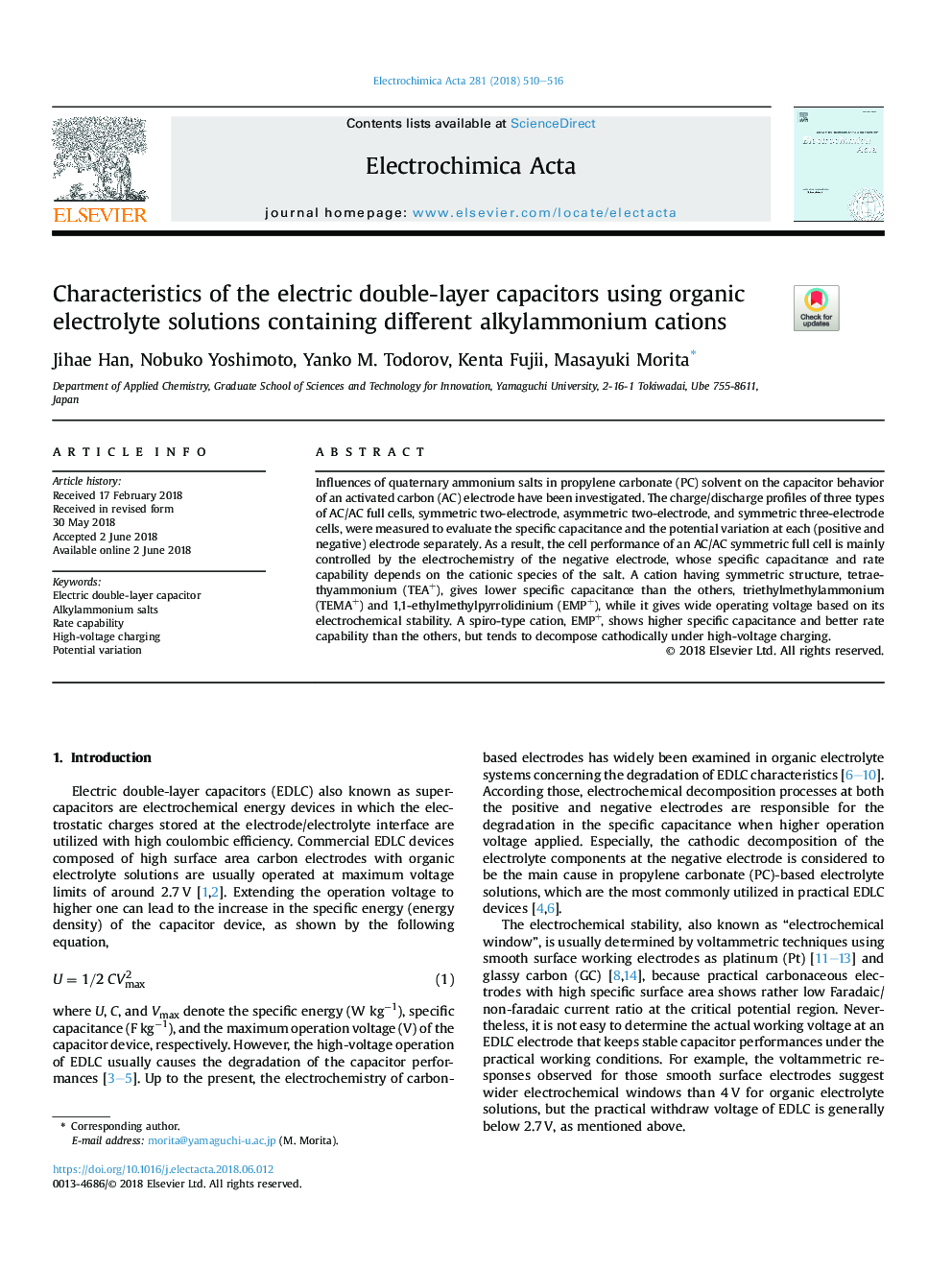| Article ID | Journal | Published Year | Pages | File Type |
|---|---|---|---|---|
| 6602408 | Electrochimica Acta | 2018 | 7 Pages |
Abstract
Influences of quaternary ammonium salts in propylene carbonate (PC) solvent on the capacitor behavior of an activated carbon (AC) electrode have been investigated. The charge/discharge profiles of three types of AC/AC full cells, symmetric two-electrode, asymmetric two-electrode, and symmetric three-electrode cells, were measured to evaluate the specific capacitance and the potential variation at each (positive and negative) electrode separately. As a result, the cell performance of an AC/AC symmetric full cell is mainly controlled by the electrochemistry of the negative electrode, whose specific capacitance and rate capability depends on the cationic species of the salt. A cation having symmetric structure, tetraethyammonium (TEA+), gives lower specific capacitance than the others, triethylmethylammonium (TEMA+) and 1,1-ethylmethylpyrrolidinium (EMP+), while it gives wide operating voltage based on its electrochemical stability. A spiro-type cation, EMP+, shows higher specific capacitance and better rate capability than the others, but tends to decompose cathodically under high-voltage charging.
Related Topics
Physical Sciences and Engineering
Chemical Engineering
Chemical Engineering (General)
Authors
Jihae Han, Nobuko Yoshimoto, Yanko M. Todorov, Kenta Fujii, Masayuki Morita,
